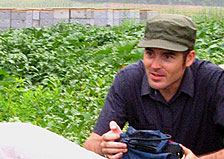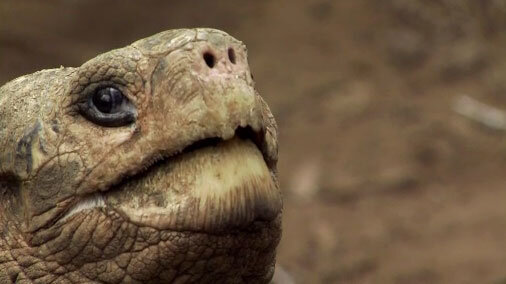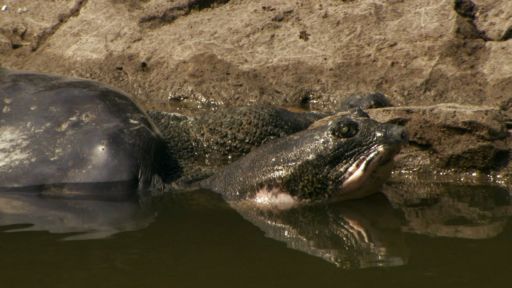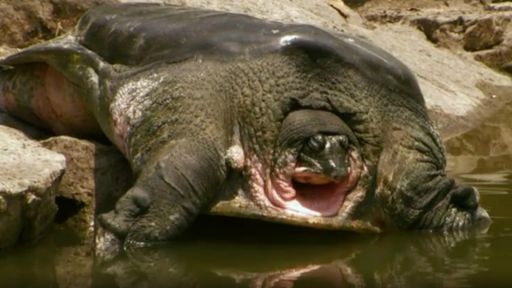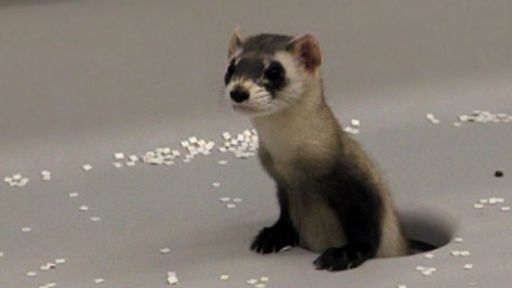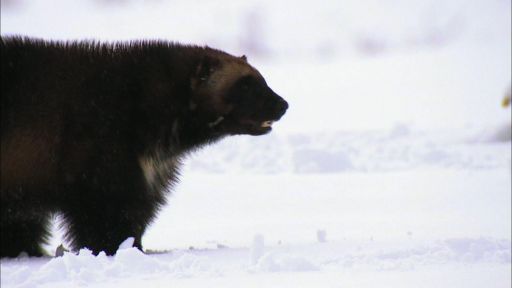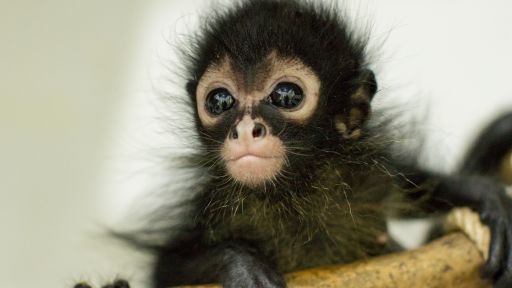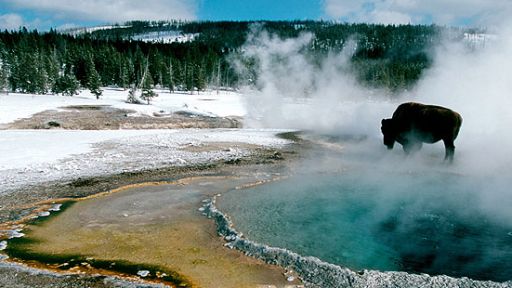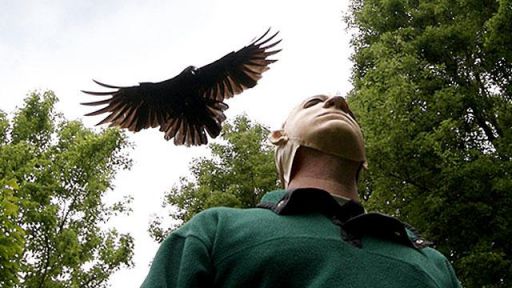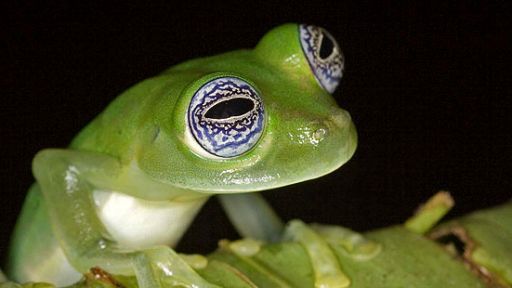Send in your questions for Doug Shultz, the producer of The Loneliest Animals. Doug also wrote and produced NATURE’s Silence of the Bees, which premiered in 2007.
On the night of the premiere — Sunday, April 19 — Doug will answer your questions here.
Submit your question for Doug in the comments box below.
—
Maggie Schwab asks:
Hi Doug I wanted to get your word of advise. I am a college student at AAU and am interested in filming wildlife. If you have any helpful tips that would be helpful to keep in mind I would really appreciate it, Thanks!
Doug Shultz says:
Hi Maggie. Thank you for your question. I would recommend getting in touch with documentary production companies and natural history filmmakers in your area to offer your services as an intern, researcher or production assistant. If you’re prepared to make little or no money while working hard for a while, there is no better way to make contacts, learn the process and gain valuable experience at all stages of production.
—
Roxanne Pao asks:
Hello,
I was wondering how the Rafetus turtles are doing? Thank You for bringing this look into the imbalance and fragility of life for endangered species to light for us.
Sincerely,
Roxanne Pao
Doug says:
Hi Roxanne. Thank you very much for your message. Since last summer, the two Rafetus turtles have been living on their separate sides of the pond at the Suzhou zoo, and the female is by all accounts very happy in her new home. The scientists determined that before coming to Suzhou, the female was on a nutrient-poor diet, which could be why many of her eggs were too brittle to survive. This year they have adjusted her diet to include extra calcium, among other things, which they hope will increase the viability of the eggs. The male and female are just now coming out of hibernation, and they plan to reintroduce the pair beginning in May. By the end of this summer, there could be a new generation of up to 100 baby Rafetus turtles. Keep your fingers crossed!
—
Leslie Jordan asks:
Hi Doug, I would also like to know about getting into filming wildlife. Any suggestions would be great. Also, any insight you can give as to the improving/worsening conditions of wild parrots in the rainforest and what we as individuals can do to help most would be most appreciated.
Doug says:
Hi Leslie. For getting into filming wildlife, see my response to Maggie, above. As for wild parrots, currently about 95 of the world’s 330 species of parrots are considered endangered. The situation for wild parrots is very serious as most live in tropical or subtropical regions where deforestation is occurring at alarming rates. On top of the habitat loss, wild birds are still caught in large numbers for the worldwide parrot trade, and their shrinking habitat only makes them easier to capture. Fortunately, importing wild-caught birds into the United States and Europe is now illegal, and most parrots sold as pets in the U.S. are captive-bred birds. An easy way to help would be to make sure you only buy eco-friendly wood (certified by the Forest Stewardship Council), and of course don’t buy wild-caught parrots as pets. For other ways to directly help the birds, try getting involved with an organization like the World Parrot Trust.
—
Robert Seay asks:
Camera skill, how do you manage to keep the camera so still during shoots?
Doug says:
Hi Robert. This requires either a good, solid tripod or a DP (director of photography) with a strong back, a steady hand, and much patience.
—
Martie Lenk asks:
Thank you for a fascinating program! How can kids get involved in protecting these amazing animals? Martie Lenk, Scuola Vita Nuova Charter School, KCMO
Doug says:
Hi Martie. Thank you for watching and hello to everyone at Vita Nuova. Helping kids grow up with an appreciation for wildlife is the best way to ensure these animals have a future. Most city zoos have good programs to get kids interested (the Kansas City Zoo has a great kids’ conservation club.) Also, the Wildlife Conservation Society has a national program called Teens 4 Planet Earth that allows teenagers to work with adult mentors on developing conservation projects. You can also help in small but effective ways by including natural history into lesson plans and everyday activities – NATURE offers a wealth of resources on this Web site. The more kids learn about animals, the more they’ll value them down the road.
—
Logan Herman asks:
Would breeding siblings or close relatives create weakened offspring? Can it be a long term solution to species survival?
Doug says:
Hi Logan. That’s a good question. Yes, all captive breeding programs face the same challenge, which is maintaining genetic diversity. Normally evolution flushes out mutations or harmful genes. However, when you’re pairing up closely related animals, the breeding is more likely to result in an expression of the harmful genes, producing unhealthy or sterile offspring. Many captive breeding programs work around this by exchanging individual animals between centers, to try to mimic natural “outbreeding” between populations. Others pair the animals through DNA matches to maintain the most genetic diversity possible. In a case like the Rafetus turtles, where there are only two, conservationists believe it’s better to keep the species alive than to do nothing at all. The female can lay up to 100 eggs, and it’s always possible someone could find another living Rafetus somewhere to mate with one of the offspring. In that case, they could have up to 100 new mates to choose from. It may not ensure long-term survival, but with these turtles able to live over a century, they could stick around longer than we think.
—
Marilyn asks:
Hi Doug:
Wonderful film!! Do you happen to know if the sanctuary in Qatar has any kind of a volunteer program?
Thank you . . .
~m
Doug says:
Hi Marilyn. Thank you very much. To my knowledge, Al Wabra is closed to the public and does not have a volunteer program. However, I can tell you that they all work extremely hard and their dedication is humbling, to say the least. You can find more information about them including contact information at their Web site.
—
Ian asks:
Hi Doug,
I’m on Hawaii time so your film doesn’t come on for a few hours more, but I’m looking forward to it. In the meantime, I wonder what you might think about the idea that humans might be considered the loneliest animal, since as a species we seem to have lost our familial connection with wider living world?
Ian
Doug says:
Hi Ian. You make a very good point. We are certainly not lonely in numbers, but I do think most people in modern society feel completely isolated from nature. It’s important to stop and remember that even here the middle of New York City, we’re connected to the living world through our air, our water, our food. If more people paused to see a reflection of themselves in lemurs or rhinos or apes – whether on TV or at the zoo – we might be able to reestablish a sustainable relationship with the other creatures that share our planet.
—
Ann Moore asks:
I would like to have updates on how all the animals are doing. Does Lonesome George have children now? Did the Yangtze turtles ever produce live offspring?
Doug says:
Hi Ann. Thanks for your questions. Lonesome George does not have offspring. Last summer at least one of the two females in his enclosure laid eggs for the first time in over a decade, and many believed George may have fertilized these eggs. However, after a failed attempt to incubate them, researchers discovered the eggs were infertile.
Other updates – Andalas has not fathered a baby rhino yet, but he is just coming into maturity and has two good options for mates at the Sumatran Rhino Sanctuary. At the Iberian Lynx Breeding Center they have had 18 cubs so far this year, with 2 more females due to whelp. The red-ruffed lemur, Carina, and her adorable triplets are happy and healthy, getting ready to spend spring in their free-ranging enclosure. Sadly, though, Titus, the only golden-crowned sifaka in captivity, died of cancer this past fall. The black-footed ferret program has produced 24 kits so far this year with more to come. Lastly, the female Rafetus is on a new diet and will be reintroduced to the male in May, with a new round of eggs expected sometime in June. With any luck, they will be adding up to 100 new Yangtze giant soft-shell turtles to the planet sometime in August.
—
Laurie LePore asks:
I was @ the Charles Darwin Research Station this summer and caught George in the act with one of the ladies in his pool. Two weeks later she laid a few eggs and I am wondering if they were indeed fertile. I have quite a few pictures and one of my students (I am a HS teacher and took students there for two weeks in July 2008.) has the event on film. We certainly were hoping for a babe or two!
Doug says:
Hi Laurie. Lucky you – that is some valuable footage. I’m sure the Darwin Station would love to see it. Unfortunately, researchers at the station recently determined that the eggs were not fertilized. No babies yet, I’m afraid.
—
Bob asks:
Nice show. Loved the summing up. Not shown letterbox here, so missed some of it. The animal “roll” at the end, though, included several species not covered – and a couple not endangered. That might confuse viewers some. But again, very cool. It would be interesting to see a follow-up in a few years.
Doug says:
Hi Bob. Thank you for your message. We wanted to show a web of connectivity between species of all kinds, including those that aren’t endangered or are even currently commonplace. I think it’s important to recognize the value of all species, before they become endangered. A few of the animals you saw — the Javan gibbon and the Panamanian golden frog — are animals that we filmed but for lack of time didn’t make it into the show. However, you can watch a clip about the gibbons on this Web site, and if you’re interested in the frogs, I recommend watching Allison Argo’s fantastic film, Frogs: The Thin Green Line, also available on the NATURE Web site.
—
George Prentice asks:
Lonesome George alone? Have you heard that the Gladas Porter Zoo in Brownsville, Texas, has a Galopogos Turtle? (Loved the show)
Doug says:
Hi George. Thanks for your question. There are actually eleven surviving subspecies of Galapagos giant tortoise. George is the last survivor of the Pinta Island subspecies, but there are many more of the other varieties, in some cases thanks to captive breeding. These other subspecies, along with another species of giant tortoise from around the Seychelles are generally what you find in zoos.
—
Imen McDonnell asks:
Hi Doug, this was so well produced and powerful. What organisations can I contribute to in aid of this cause? Thank you! Imen
Doug says:
Hi Imen. Thank you! And thank you for watching. Any of the organizations in the film would happily accept donations. Here are a few of them:
- The Turtle Survival Alliance, the group behind the Rafetus turtle introduction
- The International Rhino Foundation, which sponsors the Sumatran Rhino Sanctuary among many other important projects
- The Wildlife Conservation Society, which worked with the TSA on the turtles, and has projects all over the world
- And the Duke Lemur Center, where you can “adopt” a lemur with your contribution
These organizations all work on limited funding and would be very grateful to receive donations of any kind. Thank you for wanting to help!

